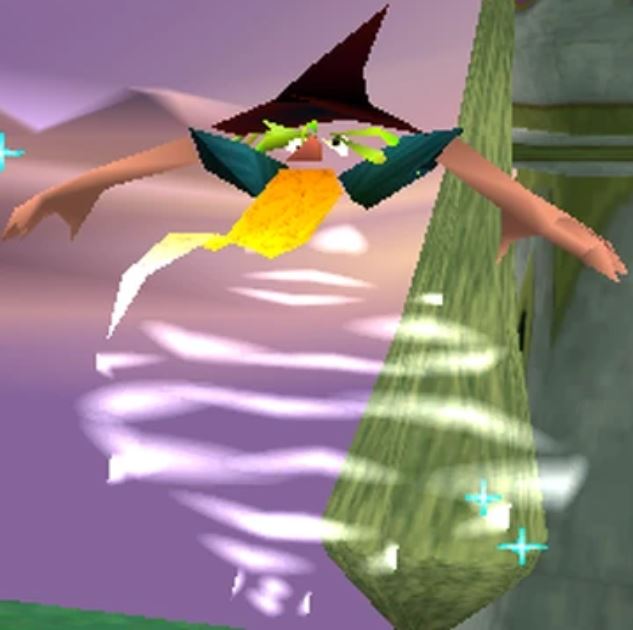Something different this month – a general folklore fact, rather than a werewolf or vampire fact! It’s been a while since I did one of these, so I figured it’s high time I toss another one out there.
Ever heard of the Man in the Moon? Of course you have. But have you ever heard of a “bilwis?” What about “Hjúki and Bil?” How about Jack and Jill? And how are all these things actually connected?
Once upon a time, I was playing a video game called Titan Quest with my brother. We ran into a strange creature labeled a Demon that was called a “bilwis.” Since the game is based heavily in real-world myth, I decided to look it up. It wouldn’t be the first time I encountered an obscure piece of mythology from a video game, that’s for sure (the game Age of Mythology helped me get into researching mythology at all, as a child; it’s still one of my favorite games).
So first, I looked up a bilwis. A bilwis can be demonic or human and is associated with corn, which would align with what I found in the game, too. They are said to have “flying” hair, are sometimes wrapped in linen, and wear triangular hats. They often appear as whirlwinds to steal grain during harvests. Then I went, wait a minute… that sounds just like Blowhard in the game Spyro the Dragon (also one of my favorite games)!

Blowhard is a bilwis! This is OG Blowhard, by the way, not from the remasters. But you should play Spyro sometime. Fantastic games. The remasters are good, too.
Anyway, that fascinated me, because I love learning things like that. But I also found something else… I found a legend called Hjúki and Bil, which was quite the rabbit-hole. Some sources claim the bilwis is related to Bil, which is how I was led here. The bilwis is sometimes said to be a female entity (but it can also be male) and was, at one time, associated with witches – and Bil is interpreted variably to be a kenning for woman, as well as a witch. The connection between Bil and the bilwis only happened in much later time periods, however – so let’s go back to the original story of Hjúki and Bil.
The tale of Hjúki and Bil comes from Norse mythology. Their names are said to mean “the one returning to health” and “instant,” respectively, though scholars apparently can’t entirely confirm that first one. They are brother and sister, a pair of children who follow the moon across the heavens. We know about them because of – you guessed it – Snorri Sturluson’s Prose Edda. There are a lot of theories around these two, but they were said to have been a pair of children, both carrying a pole on their shoulders (the pole was called Simul) and held a pail called Sæg between them. But the children were taken by Mani (the moon) from the earth, to follow the moon forever in the heavens, and “can be seen from the earth.”
It is possible that Hjúki and Bil represented the waning and waxing of the moon – or they may have even represented the craters on the moon. Scholars argue about it a lot, but many of them present compelling arguments that Hjúki and Bil were the craters, which were interpreted as children with a water pail between them on a stick.
Similar modern folklore from the same regions sees the Man in the Moon as a man with a pole, often carrying wood (or else stealing it and stuck in the moon as punishment), and sometimes with a woman with a bushel. This lends more credence to the idea of Hjúki and Bil being connected to the moon – and people in the moon.
There is another connection – one with Jack and Jill, the famous nursery rhyme…
You may have already noticed some similarities to the story of Hjúki and Bil and Jack and Jill – even their names sound similar! Both stories are about two children, one boy and one girl, who fetch a pail of water.
For those of you who need refreshing on the rhyme…
Jack and Jill went up the hill
to fetch a pail of water
Jack fell down and broke his crown
and Jill came tumbling after.
Up Jack got and home did trot
as fast as he could caper.
He went to bed to mind his head
with vinegar and brown paper.
The origins of many elements of folklore, mythology, nursery rhymes, fairytales, and all their kind are always mysterious and fascinating. It’s entirely possible that Hjúki and Bil are directly related to Jack and Jill, and that the latter is a retelling of the original Norse tale – and that the story of Jack and Jill fetching the pail represents the waning and waxing of the moon or the craters on the moon that we can see easily from Earth.
That covers a decent overview! There is of course a lot to all these things, as you might imagine, but I chose this time to focus on informing you about the existence of Hjúki and Bil and the bilwis at all, rather than getting deep into the debate and “conversation” around all these matters.
Until next time, and have a wonderful November (and happy Thanksgiving)!
( If you like my blog, be sure to follow me here and elsewhere for more folklore and fiction, including books, especially on werewolves! You can also sign up for my free newsletter for monthly werewolf/vampire/folklore facts, as well as free fiction and nonfiction book previews.
Free Newsletter — maverickwerewolf.com (personal site + book shop) — Patreon — Wulfgard — Werewolf Fact Masterlist — Twitter — Vampire Fact Masterlist — Amazon Author page )